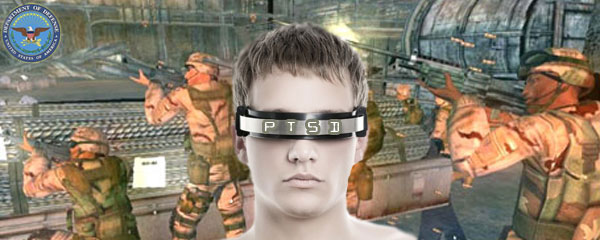
Recently we at VT have been getting a lot of feedback both positive and negative on the Pentagon’s experimentation with Virtual Reality War Simulations as a treatment for PTSD.
First let me say that I personally want to approach this with an open mind, heck I’m a strong, passionate supporter of Assistance, Service, and Companion Dogs for Vets and Troops as a treatment for PTSD but not as a exclusive approach. That said, not even the Pentagon is advocating the use of virtual reality combat simulations as the answer for PTSD, combat stress, or combat trauma but as a weapon in their arsenal for dealing with and helping troops cope with PTSD. After all the MISSION of military medicine is Force Readiness.
What I do caution are (1) Sally Satel has advocated this approach from the early stages of its development and that alone turns my radar of suspicion on, and (2) virtual reality is based on a commercial war game that is sold in Wal-Mart, K-Mart, even on Base and Post Exchanges, so why spend tax payer bucks on a defense contract when military psychologist can just pay a few bucks to pick up a similar war simulation at the Bx or Px and tailor it to the patient’s PTSD symptoms?
VT Editorial Comment and Revision: Although Sally Satel is not a direct participant in the development of this effort called Virtual Iraq, she has promoted the alternative treatment on several occasions. Dr. Albert “Skip” Rizzo the founder and developer of Virtual Iraq has no official ties with either Dr. Sally Satel or the American Enterprise Institute (AEI) that we know of.
Anyway, we at VT have decided to do a series of articles focusing on this latest development in state of the art technology to treat PTSD. I am going to do best I can to paint a balanced picture of the pros and cons, because as I said we should approach this open minded, fiscally prudent (is is cost effective per patient treated), exactly how does it differ from the War Games psychologist can buy or prescribe for their patients at the BX/PX, but most important how many active duty troops can they get to step forward and admit they have a problem using this attention getter?
Lastly, what are the implications, if any, for expansion of this treatment into the Department of Veterans Affairs? If PTSD is caught, treated, and troops even taught to cope with PTSD and stay on active duty, then eventually PTSD could become a thing of the past within the VA system. Are we talking cure here? Maybe, maybe not.
Robert L. Hanafin, Major, U.S. Air Force-Retired, VT News Network
Dr. Sally Satel Promotes Virtual Reality War Games as a Treatment for PTSD
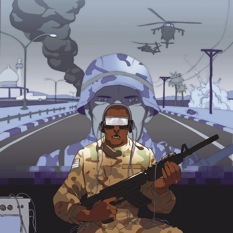 During testimony on post-traumatic stress disorder (PTSD) and other personality disorders affecting U.S. military veterans before the House Committee on Veterans’ Affairs way back on July 25, 2007, Dr. Sally Satel of the conservative think tank American Enterprise Institute (AEI) noted that VA disability determinations for PTSD needed to be tightened up to a take the emphasis off monetary compensation, in the same breath, she promoted ‘virtual reality war simulations’ mentioning Virtual Iraq, as state of the art treatment for PTSD. That was 2007 during the Bush administration, and in just three years during the Obama administration the Pentagon is now promoting it as state of the art treatment for PTSD!
During testimony on post-traumatic stress disorder (PTSD) and other personality disorders affecting U.S. military veterans before the House Committee on Veterans’ Affairs way back on July 25, 2007, Dr. Sally Satel of the conservative think tank American Enterprise Institute (AEI) noted that VA disability determinations for PTSD needed to be tightened up to a take the emphasis off monetary compensation, in the same breath, she promoted ‘virtual reality war simulations’ mentioning Virtual Iraq, as state of the art treatment for PTSD. That was 2007 during the Bush administration, and in just three years during the Obama administration the Pentagon is now promoting it as state of the art treatment for PTSD!
Her intent was commendable, for she promotes catching PTSD in its early stages while still on active duty could prevent Veterans from a lifetime of dependency on VA compensation for PTSD. She also noted that, “A point worth raising here is the importance of qualified staffing at VA mental health facilities. Anecdotal reports suggest that many [VA] facilities do not have adequate numbers of clinicians who can perform cognitive-behavioral therapies. This is a deficit that must be addressed.[12]”
 Footnote 12 in her testimony to Congress on the treatment of PTSD was that “A specific form of exposure-desensitization therapy under development is called “Virtual Iraq.” Studies are in progress. The therapy was developed with funding from the Naval Research Office and is considered promising. The veteran [really active duty Soldier or Marine] wears a virtual-reality helmet and goggles and headphones. A therapist manipulates virtual situations via a keyboard to best
Footnote 12 in her testimony to Congress on the treatment of PTSD was that “A specific form of exposure-desensitization therapy under development is called “Virtual Iraq.” Studies are in progress. The therapy was developed with funding from the Naval Research Office and is considered promising. The veteran [really active duty Soldier or Marine] wears a virtual-reality helmet and goggles and headphones. A therapist manipulates virtual situations via a keyboard to best 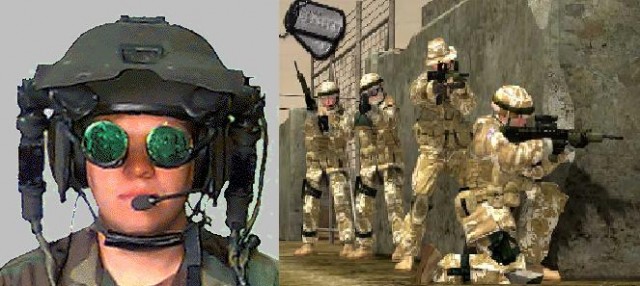 suit the individual patient during 45-50 minute sessions. By gradually re-introducing the patients to the experiences that triggered the trauma, the memory becomes tolerable and feelings of panic no longer accompany once-feared situations (such a driving on city streets, being in crowds). http://www.defense-update.com/products/v/VR-PTSD.htm, accessed July 21, 2007.
suit the individual patient during 45-50 minute sessions. By gradually re-introducing the patients to the experiences that triggered the trauma, the memory becomes tolerable and feelings of panic no longer accompany once-feared situations (such a driving on city streets, being in crowds). http://www.defense-update.com/products/v/VR-PTSD.htm, accessed July 21, 2007.
VT Editorial Revision: Of note I have spoken to a young Air Force Mental Health Clinician who has told me that at least for him the treatment has had a positive impact. He was a ground troop in the Army in Iraq prior to getting his commission as a Psychologist in the Air Force. We have discussed his situation as being traumatized when he returned by feelings of panic as he drove the streets back home fearing IEDs. He once avoided being in a crowd for fear of suicide bombers. His experience with Virtual Iraq took away some of his feelings of anxiety and panic. Thus, we are not totally ignoring the positive effect virtual reality may be for a few of our troops coming forth to admit PTSD. This approach does have the positive aspect of trying to break down the stigma associated with going to the Mental Health clinics on Army and Marine base.
The contract between a video game production company, college research centers, and virtual technology companies that specializes in Iraq War simulations seeking defense contracts for games already sold at BXs and PXs around the world is one thing, but suggesting that the “VA must be equipped with mental health staff trained in [Virtual Reality] state of the art PTSD treatment. Treatment should be delivered at early as possible to avert development of chronic syndromes” is quite another.
Any serious Veteran’s advocate who doesn’t know Dr. Satel’s reputation for cost savings on the backs of America’s Veterans and views influenced by the book Stolen Valor knows that when Sally says “to avert development of chronic syndromes” she IS NOT just talking psychology, but she shares a belief that Veterans are motivated by monetary gain to seek treatment for PTSD and far too many are fakes.
However, it was not Dr. Satel’s link to the 2007 Defense Department update on Virtual Reality therapy that caught our eye at VT; it was the link to the Video Game and virtual reality developers and scientists getting the defense contract, their motivations, their logic, and the role played by military medical and mental health personnel.
Before this approach be promoted within the Veterans Community or VA, closer scrutiny needs to be played to all the players behind this approach to PTSD treatment. Why?
 There are beaucoup bucks to be made in video games that promote and glorify war. Just walk into any computer or video game store, or section of a Base or Post Exchange, or your local Wal-Mart. The militarization of the video game entertainment industry is a well known, and successful, retail sales fact – WAR SELLS!
There are beaucoup bucks to be made in video games that promote and glorify war. Just walk into any computer or video game store, or section of a Base or Post Exchange, or your local Wal-Mart. The militarization of the video game entertainment industry is a well known, and successful, retail sales fact – WAR SELLS!
Should the same attraction youngsters have for violent video games that even the military uses to recruit for combat be seriously considered as a treatment or cure for PTSD? Maybe, maybe not.
Games for Health Day – the Birth of Virtual Reality as a Treatment for PTSD
I’d like to note first off that I myself have been through cognitive therapy for Neurological difficulties (memory problems), so I am well aware of the benefit that on-line video game therapy can provide folks with mental or cognitive problems. Thus, I am not down on the concept itself nor the intent but only the motivation  behind the concept and intent.
behind the concept and intent.
I am also a fan of strategic war games, like Rome Total War, Shogun Total War, Medieval Total War, the Crusades, and various American Civil War ‘GAMES,’ heck I’m into violent war games, so I’m not totally down of the entertainment or therapeutic use of strategy war games. If I want to exercise my mind by conquering a nation, the world, and kill thousands in the process IT AIN’T REAL! I can hit the delete key and start over, hell I can even cheat and play God. HOWEVER!
Games For Health 2006: Addressing PTSD, Psychotherapy & Stroke Rehabilitation with Games & Game Technologies
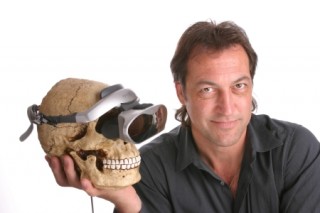 We ran across this expose on Serious Games Sources.com promoting an entertainment video game convention called Games For Health 2006: Addressing PTSD, Psychotherapy & Stroke Rehabilitation with Games & Game Technologies as part of the Games For Health day held at the University of Southern California [USC] on May 9th, USC’s Dr. Albert “Skip” Rizzo, the founder of ‘Virtual Iraq’ presented his study on psychotherapy and stroke rehabilitation using video games and related technologies, such as virtual reality (VR).
We ran across this expose on Serious Games Sources.com promoting an entertainment video game convention called Games For Health 2006: Addressing PTSD, Psychotherapy & Stroke Rehabilitation with Games & Game Technologies as part of the Games For Health day held at the University of Southern California [USC] on May 9th, USC’s Dr. Albert “Skip” Rizzo, the founder of ‘Virtual Iraq’ presented his study on psychotherapy and stroke rehabilitation using video games and related technologies, such as virtual reality (VR).
Dr. Albert “Skip” Rizzo – Virtual Reality Treatment for PTSD
Dr. Rizzo presented three therapeutic areas he was working in at the time.
Expose, Distract, and Motivate
The three main strategies Dr. Rizzo was using, he abbreviated as Expose, Distract and Motivate. To develop the therapeutic Virtual Reality (VR) systems he talked about, Dr. Rizzo worked with a host of other collaborators from different departments at USC, including among others Computer Science, Neuroscience, Annenberg School of Communication and Journalism, Department of Biokinesiology and Physical Therapy, Department of Occupational Sciences, USC Keck School of Medicine, Department of Psychology, School of Gerontology & Neurology, Department of Cell and Neurobiology and also the Children’s Hospital of Los Angeles.
University of Haifa in Israel contributes a War on Terror input
In addition to the USC departments, Dr. Rizzo mentioned nearly a dozen clinical partners at universities and hospitals around the U.S., as well as at the University of Haifa in Israel.
The ‘Expose’ Strategy For PTSD
For Post Traumatic Stress Disorder (PTSD), Dr. Rizzo dealt with the strategy referred to as “Expose”. In order to create simulations for treating soldiers suffering from PTSD, including soldiers currently [2006] serving in Iraq, Dr. Rizzo worked closely with Jarrell Pair of the Institute for Creative Studies at USC. Quoting from the New England Journal of Medicine, Time Magazine and other sources, Dr. Rizzo established that symptoms of PTSD are increasing with soldiers involved in the war in Iraq, compared, for instance, with soldiers who fought in Afghanistan.
VETERANS TODAY EDITORIAL COMMENT: Dr. Rizzo’s findings at the time may have been valid due to the Pentagon’s emphasis on military operations in Iraq as opposed to Afghanistan, but the contrary may be true today with the switch in focus to military operations in Afghanistan.
The definition of PTSD (from Dr. Rizzo’s Power Point slide) was as follows: “Post Traumatic Stress Disorder (DSM-4) is caused by traumatic events that are outside the range of usual human experiences such as military combat, violent personal assault, being kidnapped or taken hostage, terrorist attack, torture, incarceration as a prisoner of war, natural or man-made disasters, automobile accidents, or being diagnosed with a life-threatening illness.
VT Editorial Comment: Note Dr. Rizzo’s use of the terminology “violent personal attacks” instead of calling it what it is RAPE. Although the inference is there, the actual focus on female troops is glaringly missing as if rules prevention women from combat positions make them immune to PTSD or RAPE.
Dr. Rizzo also notes that “The [PTSD] disorder also appears to be more severe and longer lasting when the event is caused by human means and design (bombings, shootings, combat, etc.).”
Once again we at VT would view caused by human means to mean RAPE.
Dr. Rizzo described some of the symptoms of PTSD, such as flashbacks, reoccurring nightmares, avoidance, emotional numbing, hyper arousal, and drug abuse and relationship problems. These are just some of the symptoms, however, which can extend into many areas of a person’s life. He said that over time, some people adapt or habituate to the effects of their experiences, and can return to baseline levels. However, people with PTSD may begin to suffer symptoms after 30 days and, though some symptoms appear to lessen at first, the effects tend to flatten out without getting any better over time.
Preparing our Warrior of the Future – Gradual Exposure to Trauma in a Manageable Way
This is most preposterous coming from an academic community and society in which less than one percent of the population is EXPECTED to serve the nation and protect the other 99%.
What we at VT see is an academic attempt to brainwash a future generation of Warriors to be killing machines without conscious, simply put ROBOTS. Why not simply use robots or better yet mercenaries to serve the other 99% of us?
The therapeutic approach Dr. Rizzo’s project took used gradual exposure to trauma in a manageable way, which eventually led to habituation and extinction of the PTSD syndrome. Does this mean that Dr. Rizzo has stumbled upon a cure for PTSD?
Normally, about 75% of soldiers will begin to display PTSD symptoms within about six months. With traditional [VIETNAM ERA] therapy, this is reduced to about 67%. But with exposure therapy, this can be reduced to only 27%.
“We normally rely on a patient’s imagination – what is called ‘imaginal therapy’, but we know we can provide the exposure to them through game environments,” said Rizzo.
Though the Pentagon is touting the success of Virtual Reality this is what Congress is not being told – there are vulnerabilities and limitations:
Problems with imaginal therapy include patients being unwilling or unable to visualize effectively or avoidance of the reminders of the trauma. When a patient can’t emotionally engage through imagination, it is unlikely that imaginal therapy will be effective.
Tools For Gradually Exposing Sufferers To Trauma – Virtual Vietnam, World Trade Center, Virtual Iraq?
 Dr. Rizzo then mentioned several virtual tools, such as Virtual Vietnam from Emory University, as well as several others including a World Trade Center simulation from Cornell. Showing images from the Virtual Vietnam simulation, which depicts realistic scenes typical of that conflict; Dr. Rizzo cited a 1998 study that found, even 20 years after the events, that symptoms of sufferers of PTSD were reduced by 34 percent, while patients engaged in self-assessment though their symptoms saw reductions of 45 percent.
Dr. Rizzo then mentioned several virtual tools, such as Virtual Vietnam from Emory University, as well as several others including a World Trade Center simulation from Cornell. Showing images from the Virtual Vietnam simulation, which depicts realistic scenes typical of that conflict; Dr. Rizzo cited a 1998 study that found, even 20 years after the events, that symptoms of sufferers of PTSD were reduced by 34 percent, while patients engaged in self-assessment though their symptoms saw reductions of 45 percent.
VT Editorial Comment: This means that yes the use of Virtual Reality could and should be extended to patients from the Vietnam and Gulf War generations claiming PTSD to reduce their symptoms if it is being promoted as a treatment for younger Veterans and Troops. However, only about 20 Vietnam veterans have been through VRE therapy, with positive results.
The emphasis on Terrorism (Virtual Terrorist Bombing of a Bus) vs other forms of PTSD such as Rape?
Dr. Rizzo skipped over the World Trade Center simulation, saying we didn’t need to see that again, but he did show a video clip of a virtual terrorist bus bombing from an Israeli perspective in collaboration between Israel’s University of Haifa and the University of Washington, demonstrating how the severity and realism of the simulation could be adjusted for therapeutic purposes. Other examples shown during the presentation of VR employed in treating PTSD included Motor Vehicle Accidents, a simulation from the University of Buffalo and Virtual Angola, which was created in Portugal.
Once again, we note that obvious virtual reality cannot be applied to some very emotional traumatic experiences like rape, or child abuse, but it can be applied to humans placed in a combat situation over and over and over again.
The focus on Virtual Iraq and Defense Contract with the DoD Office of Naval Research
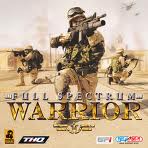 Dr. Rizzo then discussed his project at USC, Virtual Iraq, which is based on the popular commercial Xbox game, Full Spectrum Warrior, using assets from the popular video war game on top of others that have been added. This of course saved both time and money, as Dr. Rizzo and his team worked with the Office of Naval Research (ONR) as well as USC Institute for Creative Technologies (ICT), Virtually Better, Inc. and the Virtual Reality Medical Center (VRMC).
Dr. Rizzo then discussed his project at USC, Virtual Iraq, which is based on the popular commercial Xbox game, Full Spectrum Warrior, using assets from the popular video war game on top of others that have been added. This of course saved both time and money, as Dr. Rizzo and his team worked with the Office of Naval Research (ONR) as well as USC Institute for Creative Technologies (ICT), Virtually Better, Inc. and the Virtual Reality Medical Center (VRMC).
VT Editorial Comment: Above alone we Veterans have three or four separate defense contracts, but each virtual reality research center IS NOT going to do this collaboration free of charge.
Full Spectrum Warrior-Game Description
The U.S. Army is the most powerful ground force in the entire world. The backbone of a ground invasion is the U.S. Army Infantry, and in the midst of combat, their skills, courage, and teamwork are put to the test. Full Spectrum Warrior is based on a game commissioned by the U.S. Army to train light Infantry troops in urban combat situations. Soldiers are placed in a tense, hostile, and claustrophobic environment where they must complete a variety of military objectives. Players act as the Squad Leader, providing direction to Alpha and Bravo fire teams. The successful Squad Leader effectively uses cover in the environment and moves his fire teams in a coordinated fashion so they can protect themselves from possible attacks that could come from any direction. Full Spectrum Warrior puts you in the dirt with your men, where danger lurks around every corner.
THE NEXT PART OF VIRTUAL IRAQ THE WAR GAME TREATMENT FOR PTSD WILL BE ON DEVELOPMENTS SINCE 2006/7 THAT HAVE BEEN BRIEFED BY DOD TO CONGRESS AS OF MAY 2010
Readers are more than welcome to use the articles I’ve posted on Veterans Today, I’ve had to take a break from VT as Veterans Issues and Peace Activism Editor and staff writer due to personal medical reasons in our military family that take away too much time needed to properly express future stories or respond to readers in a timely manner.
My association with VT since its founding in 2004 has been a very rewarding experience for me.
Retired from both the Air Force and Civil Service. Went in the regular Army at 17 during Vietnam (1968), stayed in the Army Reserve to complete my eight year commitment in 1976. Served in Air Defense Artillery, and a Mechanized Infantry Division (4MID) at Fort Carson, Co. Used the GI Bill to go to college, worked full time at the VA, and non-scholarship Air Force 2-Year ROTC program for prior service military. Commissioned in the Air Force in 1977. Served as a Military Intelligence Officer from 1977 to 1994. Upon retirement I entered retail drugstore management training with Safeway Drugs Stores in California. Retail Sales Management was not my cup of tea, so I applied my former U.S. Civil Service status with the VA to get my foot in the door at the Justice Department, and later Department of the Navy retiring with disability from the Civil Service in 2000.
I’ve been with Veterans Today since the site originated. I’m now on the Editorial Board. I was also on the Editorial Board of Our Troops News Ladder another progressive leaning Veterans and Military Family news clearing house.
I remain married for over 45 years. I am both a Vietnam Era and Gulf War Veteran. I served on Okinawa and Fort Carson, Colorado during Vietnam and in the Office of the Air Force Inspector General at Norton AFB, CA during Desert Storm. I retired from the Air Force in 1994 having worked on the Air Staff and Defense Intelligence Agency at the Pentagon.
ATTENTION READERS
We See The World From All Sides and Want YOU To Be Fully InformedIn fact, intentional disinformation is a disgraceful scourge in media today. So to assuage any possible errant incorrect information posted herein, we strongly encourage you to seek corroboration from other non-VT sources before forming an educated opinion.
About VT - Policies & Disclosures - Comment Policy



